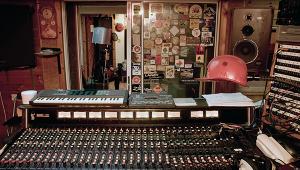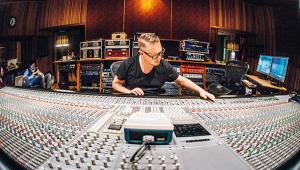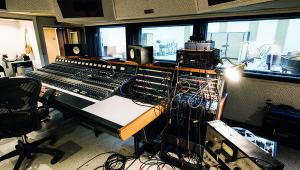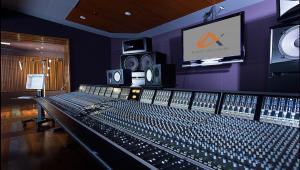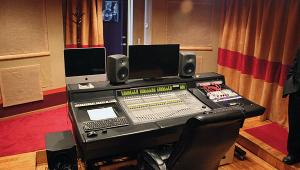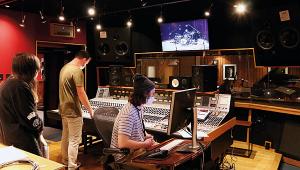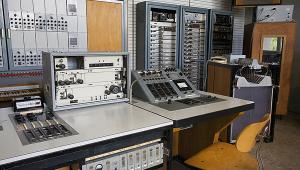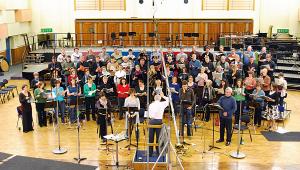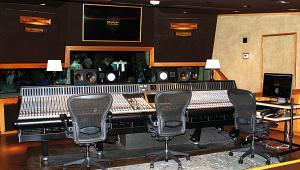Siemens Electronic Studio Page 2
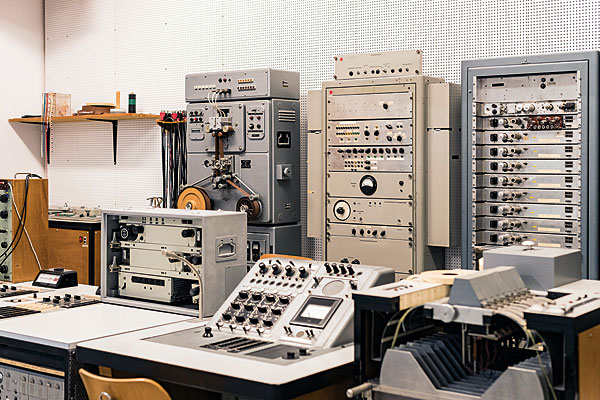
Various inventors had already come up with electronic noise-making machines, but by the early '50s there was a collective desire to create a studio atmosphere where experimentation could flourish.

Binary Beats
This led to musical pioneer Karlheinz Stockhausen forming The Studio For Electronic Music Of The West German Radio in Cologne. It did not go unnoticed by the Munich-based Siemens company, itself a technological pioneer, and when, in 1955, it decided to commission a documentary about itself called Impuls Unserer Zeit (Impulse Of Our Time), it also decided it needed its own appropriately modernistic soundtrack.
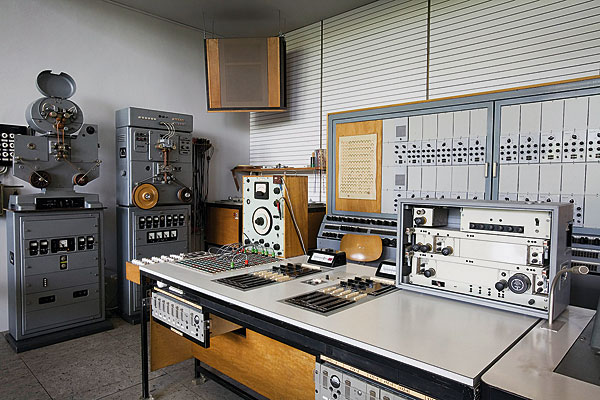
Esteemed German composer Carl Orff was approached to compose the music but he declined, instead recommending the work be undertaken by one of his students, Josef Anton Riedl, who completed it in the company's Gauting laboratory in 1959. His creation was the first ever binary-coded electronic music using punched tape, and when the film won the Deutscher Filmpreis for the best feature-length documentary, the place swiftly became overrun with like-minded, future-focused composers and their new-fangled concoctions.
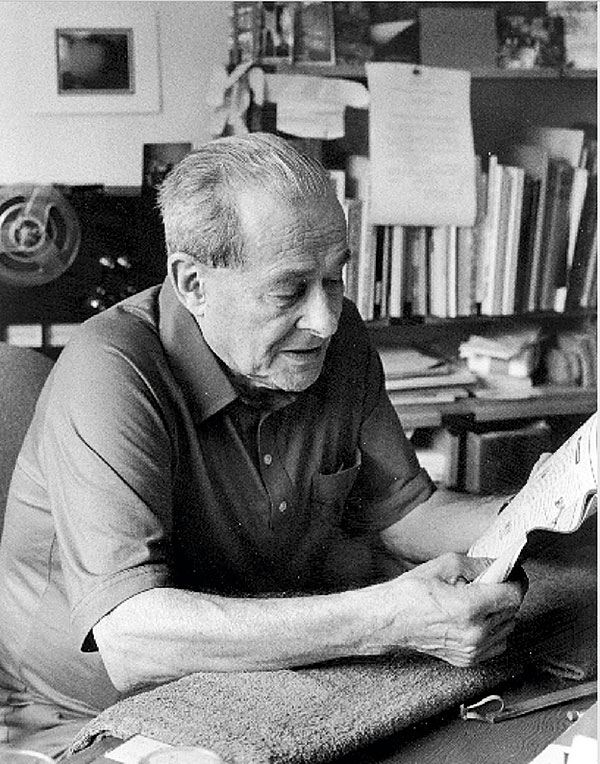
Hole Notes
Siemens, recognising the potential, closed the Gauting premises and funded a spanking new studio built in a 650 square foot area in the basement of the company's building on Oskar von Miller Ring in Munich. Director of the new studio until 1963 was Joachim Neumann, who was then replaced by Hansjorg Wicha who, together with composer Peter Thomas, had developed an electronic instrument called the Thowiphon. Other equipment included the Siemens Synthesiser, which featured a set of four punch-paper rolls controlling timbre, envelope, pitch and volume; a bank of 20 oscillators; an impulse generator; a white noise generator; and a hybrid electronically amplified reed instrument called a Hohnerola marketed by the German instrument manufacturer Hohner.
Riedl was still involved as musical consultant and everyone who was anyone in the field of experimental new music enjoyed the facilities, including Stockhausen and John Cage. Soundtracks were created for films, adverts, the Bavarian State Opera and the Munich Chamber Orchestra among others.
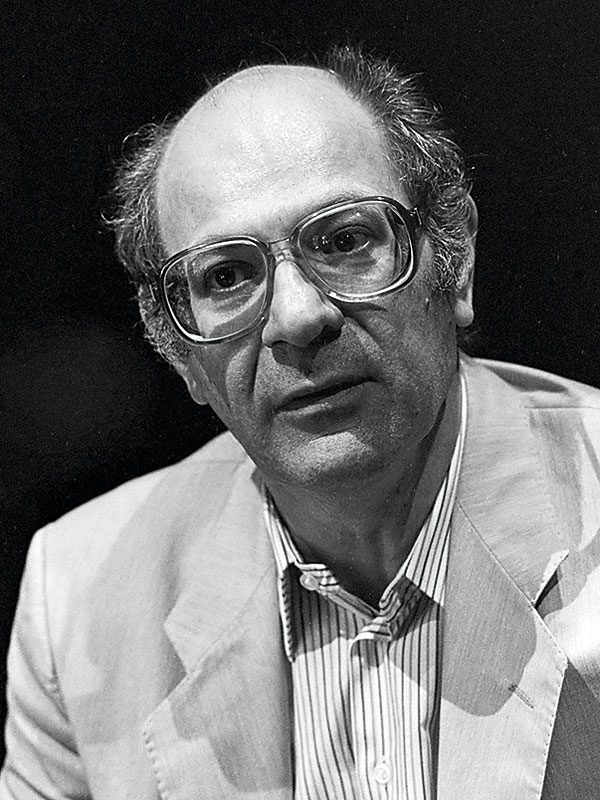
Visiting composers included Herbert Brün who composed his Wayfaring Sounds there, and Mauricio Kagel whose 1965 work Antithesis was developed into Spiel Fur Einen Darsteller Mit Elektronischen Und Offentlichen Klangen (Play For A Performer With Electronic And Open Sounds). Riedl himself used the facilities to create his own Studien Fur Elektronische Klange (Studies For Electronic Sounds) between 1959 and 1962.
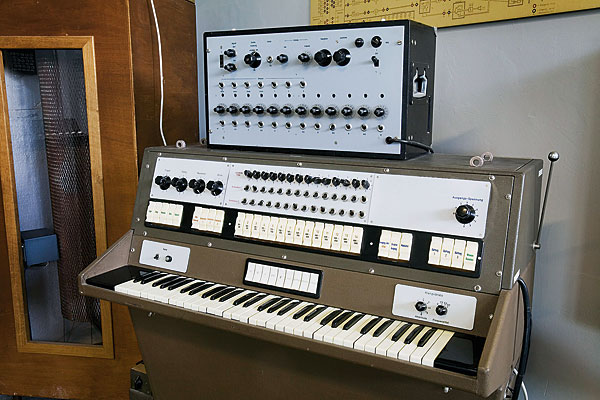
Sonic Showpiece
Rising costs forced Siemens to pull the plug on the studio in 1963. Much of the equipment was transferred to the Ulm School Of Design in 1966 but that closed two years later, the machinery dumped into the basement where it lay largely forgotten for some 30 years.
That was until Riedl and others searched it out and donated it to a new home in the music department of Munich's Deutsches Museum on Museum Island, where it resides as an exhibit today, hosting regular demonstrations of some of the most out-there and revolutionary music ever conceived. Marinetti must be turning in his grave...
